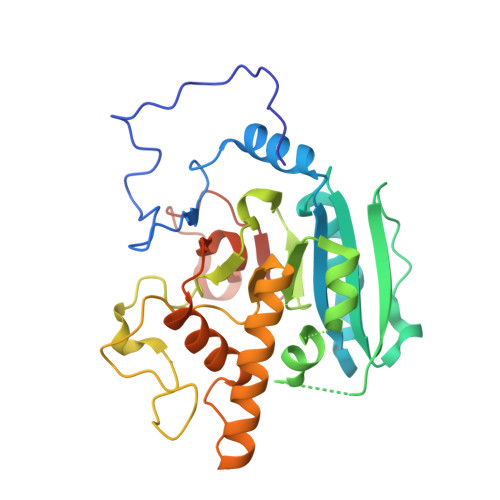Sequence-dependent effects of cryoprotectants on the active sites of the human ABO(H) blood group A and B glycosyltransferases.
Johal, A.R., Schuman, B., Alfaro, J.A., Borisova, S., Seto, N.O., Evans, S.V.(2012) Acta Crystallogr D Biol Crystallogr 68: 268-276
- PubMed: 22349229
- DOI: https://doi.org/10.1107/S0907444912001801
- Primary Citation of Related Structures:
3SX3, 3SX5, 3SX7, 3SX8, 3SXA, 3SXB, 3SXC, 3SXD, 3SXE, 3SXG - PubMed Abstract:
The human ABO(H) A and B blood group glycosyltransferases GTA and GTB differ by only four amino acids, yet this small dissimilarity is responsible for significant differences in biosynthesis, kinetics and structure. Like other glycosyltransferases, these two enzymes have been shown to recognize substrates through dramatic conformational changes in mobile polypeptide loops surrounding the active site. Structures of GTA, GTB and several chimeras determined by single-crystal X-ray diffraction demonstrate a range of susceptibility to the choice of cryoprotectant, in which the mobile polypeptide loops can be induced by glycerol to form the ordered closed conformation associated with substrate recognition and by MPD [hexylene glycol, (¡À)-2-methyl-2,4-pentanediol] to hinder binding of substrate in the active site owing to chelation of the Mn?? cofactor and thereby adopt the disordered open state. Glycerol is often avoided as a cryoprotectant when determining the structures of carbohydrate-active enzymes as it may act as a competitive inhibitor for monosaccharide ligands. Here, it is shown that the use of glycerol as a cryoprotectant can additionally induce significant changes in secondary structure, a phenomenon that could apply to any class of protein.
Organizational Affiliation:
Department of Biochemistry and Microbiology, University of Victoria, Victoria, BC V8W 3P6, Canada.


















